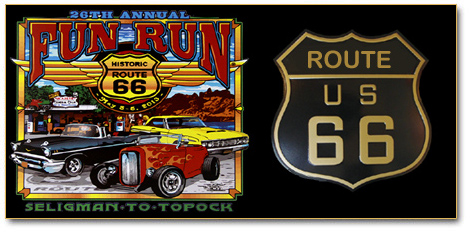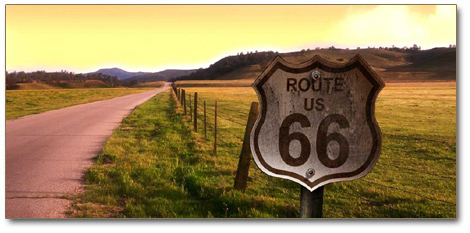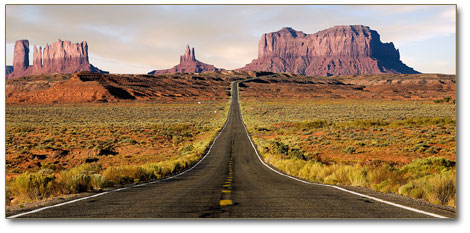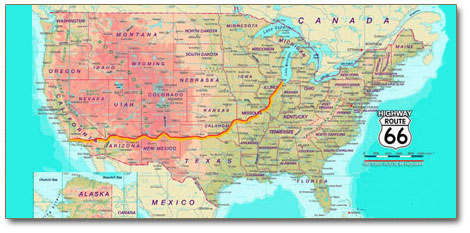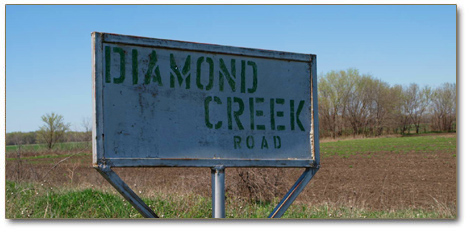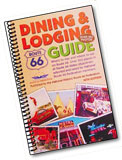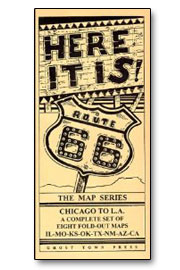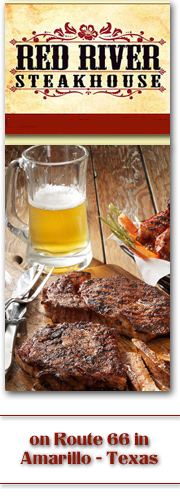It all started when a couple, David Knudson and his wife Mary Lou, wanted to experience the historic highway back in October of 1964 but could barely find it. There were no road signs and it wasn’t shown on any maps. It had pretty much disappeared except for old relics of the highway sitting silently on the old highway bypassed by the interstate thoroughfares which had been built to replace the legendary highway. The iconic thoroughfare which had taken motorists from Chicago to the shores of the Pacific Ocean was still there, but had disappeared from the sight of contemporary travelers.
Mr. and Mrs. Knudson wanted to enjoy the experience of not only traveling the historical highway, but eat at the ecclectic diners, sleep in the stylish motels and stop to buy souvenirs from old trading posts that had once lined old Route 66. So what were they to do…?
Yep. They drove back to California, sold their business and started the daunting full-time task of bringing Route 66 back to life by creating The National Historic Route 66 Federation. Since those early days the National Historic Route 66 Federation has become a worldwide, nonprofit organization dedicated to bringing attention to the public of the importance of U. S. Highway Route 66 in America’s cultural heritage. The foundations efforts resulted in acquiring the federal, state and private support necessary to preserve the historic landmarks and revitalize the economies of communities along the entire 2,400-mile stretch of road.
This is accomplished through public education, advocacy and membership activities. Their strategies include publication of the quarterly magazine Federation News, the Adopt-A-Hundred Preservation Program, a presence on the worldwide web, serving on the National Route 66 Corridor Preservation Program, publishing and marketing the Route 66 Dining and Lodging Guide and the EZ66 GUIDE For Travelers. They provide special events and assistance to the media, authors, learning institutions and production companies for highway Route 66 related projects.
The National Route 66 Preservation Bill was passed by Congress and signed into law by President Clinton back in 1999. It provides $10 million in matching fund grants to individuals, corporations and communities for the purpose of preserving or restoring historic properties along the historic route. The Federation created the Adopt-A-Hundred Program which uses over 20 volunteer members who take responsibility for individual 100 mile stretches of Route 66. They drive their 100 mile stretches at least twice a year looking for and reporting possible preservation problems.
Every other year they travel their 100 mile sections and review the dining and accommodation establishments. These detailed reports are then compiled for the latest edition of the Route 66 Dining and Lodging Guide. The main purpose of the guide is to encourage people to explore the historic highway and to help them find dining and accommodation that are unique and affordable. It emphasizes the vintage establishments so travelers can enjoy their historic roadway experience of bygone Americana.
The EZ66 GUIDE For Travelers is a joint project between the National Historic Route 66 Federation and author/artist Jerry McClanahan. Its purpose is to make traveling the many unmarked/unsigned and often confusing segments of Route 66 as easy as possible to navigate. It shows that each of these historic segments offer their own unique view of the region in which they are situated.
Film, radio and television production companies, as well as reporters and authors from around the world prepare material about Route 66 and seek out the National Historic Route 66 Federation for assistance every year. Obviously, the passion that the Knudson’s had for this historic highway has resulted in huge benefits for travelers – whether they be Americans or foreign – individuals or professional groups. David Knudson and his wife, Mary Lou have been invaluable in preserving the historic highway for travelers wishing to experience this piece of history.
www.national66.org
